Tips & tricks | Estimated Read time – 6:20
As a group of people passionate about creating memorable experiences, and encouraging others to move and challenge themselves, there’s a lot to take away from ASICS’ recent report on the gender exercise gap.
You may also be wondering what you can do.
We’re sharing insights from the report specific to you, event organizers, that will not only help increase participation and build a sense of community at your events, but ultimately help break down those barriers that are preventing women from experiencing the emotional, mental, and physical benefits of movement.
Study findings
Let’s take a step back in time to 2022, when ASICS completed their State of Mind Index study and uncovered that women are exercising significantly less than men. So, to better understand the issue and help close the gender exercise gap, ASICS conducted a second global study that included nearly 25,000 people, across 40 different countries.
Here’s what they learned:
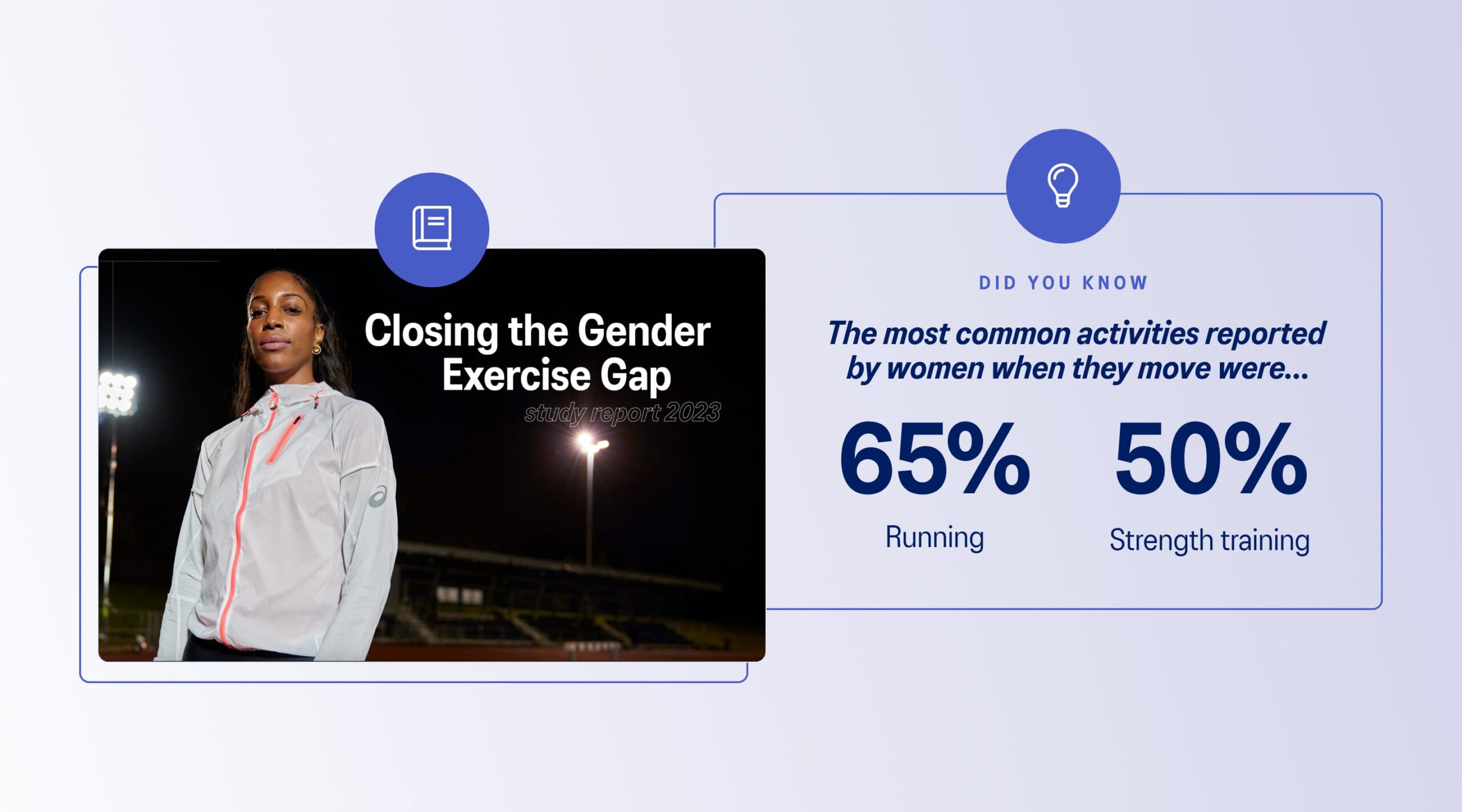
Overall, despite exercising less than men on average, women report wanting to do more, and that activity has a strong, positive impact on their mental wellbeing. Meaning: we have an opportunity.
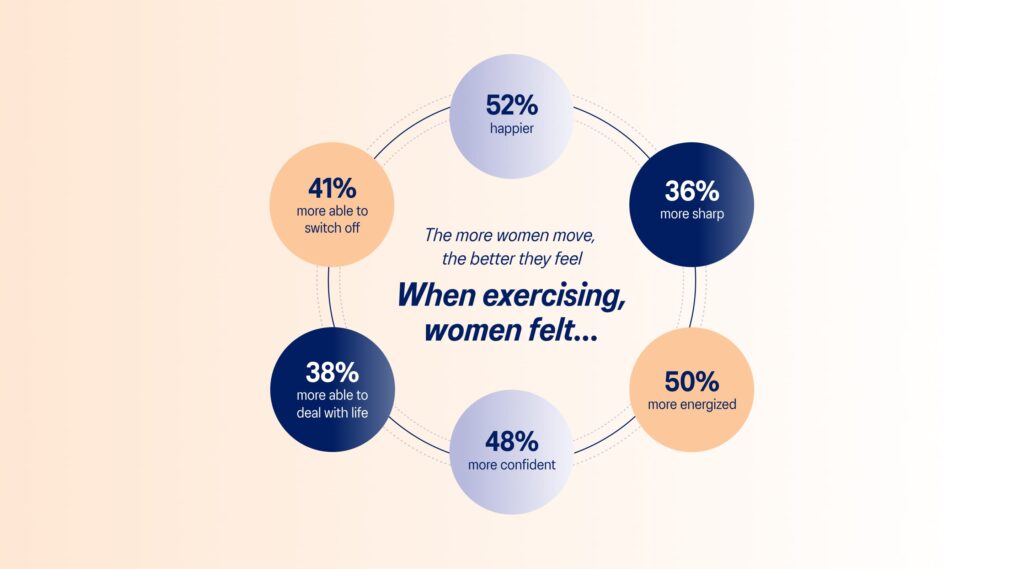

Did you know?
The most common activities reported by women when they move were running (65%) & strength training (50%).
Women’s barriers to exercise:
If women report wanting to move, what’s preventing them from doing so? The report summarizes the top five barriers to exercise that women across ages, locations, and activity levels most commonly reported:
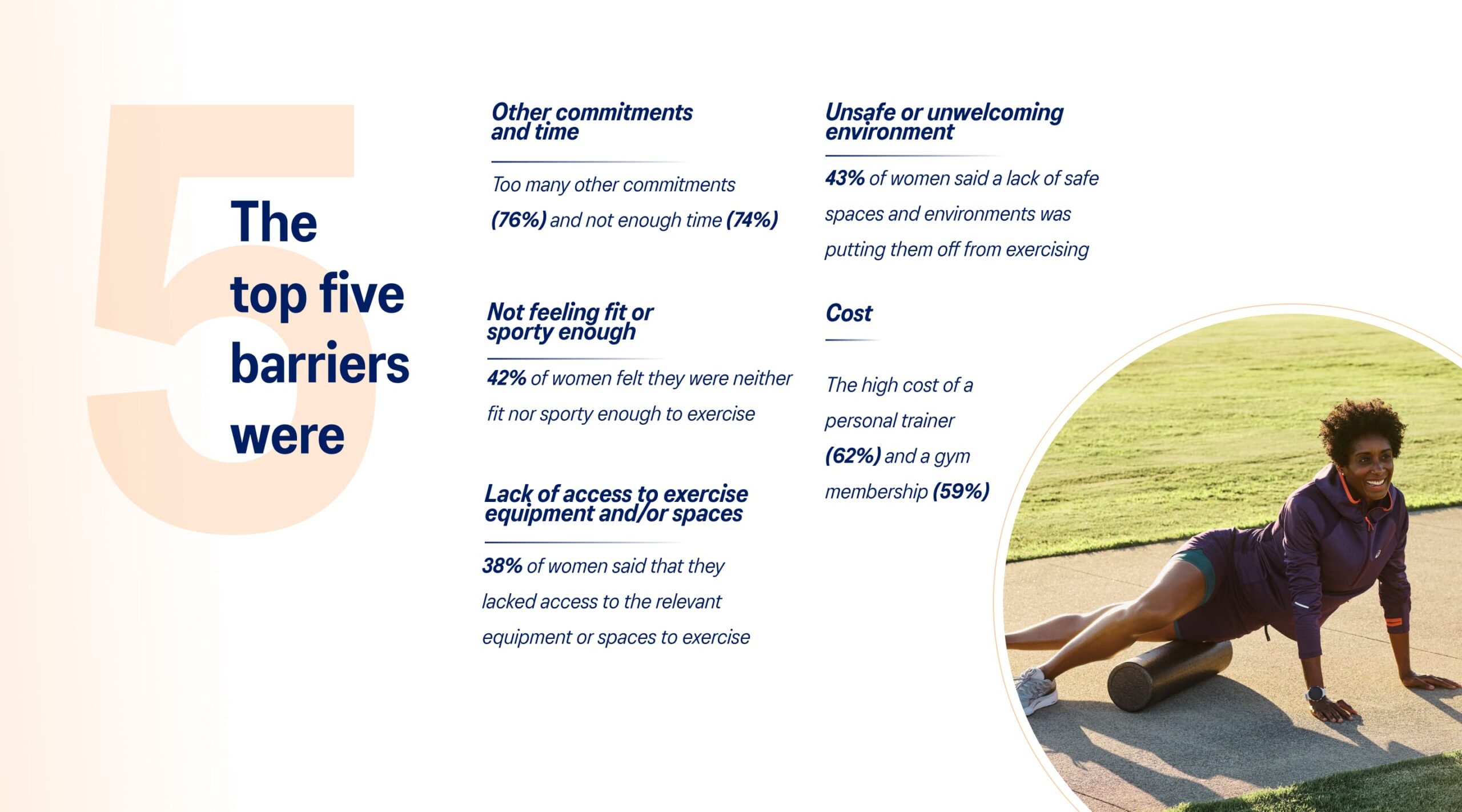
In good news, our industry has qualities that naturally help combat some of these barriers. For example, many endurance sports – namely running – are inherently accessible. If you have a pair of running shoes, and a walking path, trail, sidewalk or some green space, you can participate!
On the flip side, the accessible nature of running also opens it up to other concerns, like safety. And of course, the low cost of entry doesn’t solve the issue of time, and other commitments women reported. So, be thoughtful about how you can make your events feel safer and more inclusive.
What motivates women to move?
Before we talk about motivators, we should first talk about why women move, when they move. Overall, the reasons women move are motivated more by internal, than external factors. When asked for their reasons:

But what gets women, and keeps them moving? When trying to understand the factors that encourage, and sustain women’s movement, five facilitators of exercise were identified:
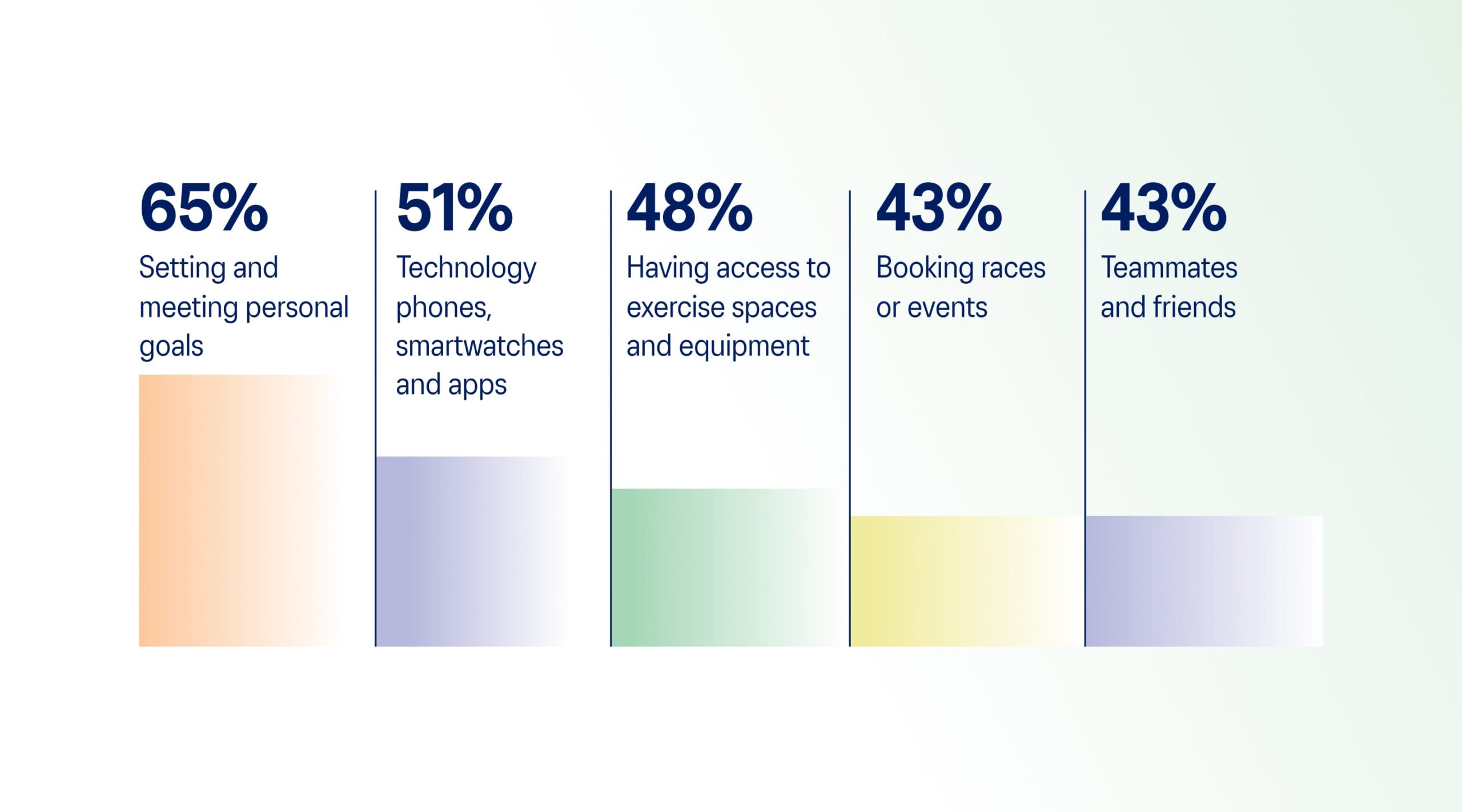

Did you know?
43% of women reported that signing up for events and races helps motivate them to start, and keep moving!
Interestingly, when women were asked who their biggest exercise influencers were, they didn’t name a celebrity or social influencer. They said:
1. Friends
2. A childhood parent (most frequently among young adults)
3. Romantic partners
So before approaching the social media influencers we commonly think of, first look at who your current participants are, and your opportunities to work with them!
Key takeaways:
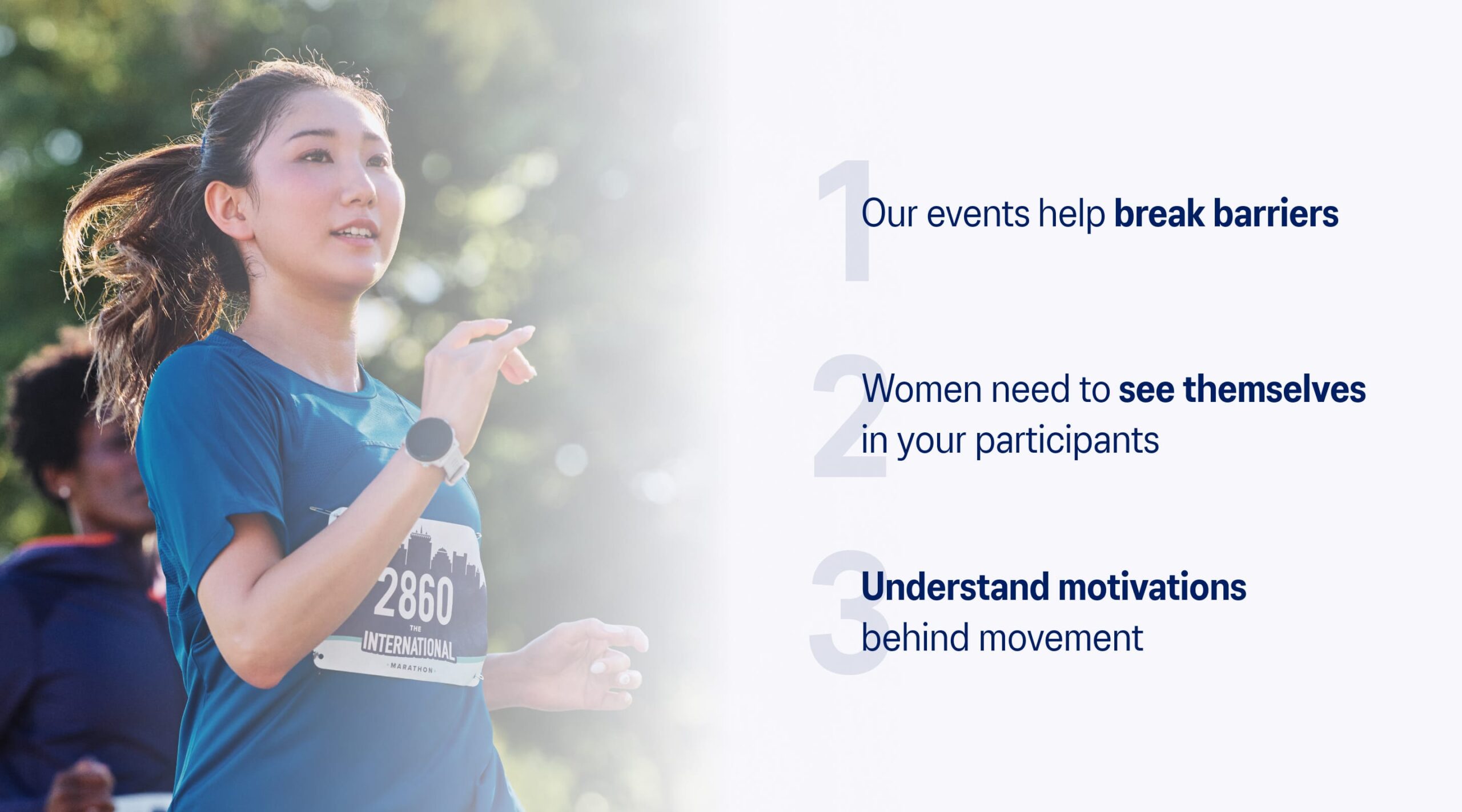
1. Our events help break barriers
- Create opportunities for participants to invite friends & loved ones
- Consider a variety of distance and competition options
- Consider safety not just at your event, but leading up to it
2. Women need to see themselves in your participants
- Find and connect with community groups
- Segment & personalize when possible
- Capture and share your event’s diversity
3. Understand motivations behind movement
- Know what motivates your participants
- Incorporate mental wellbeing in your event
- Offer unique event formats
Actionable solutions for your events:
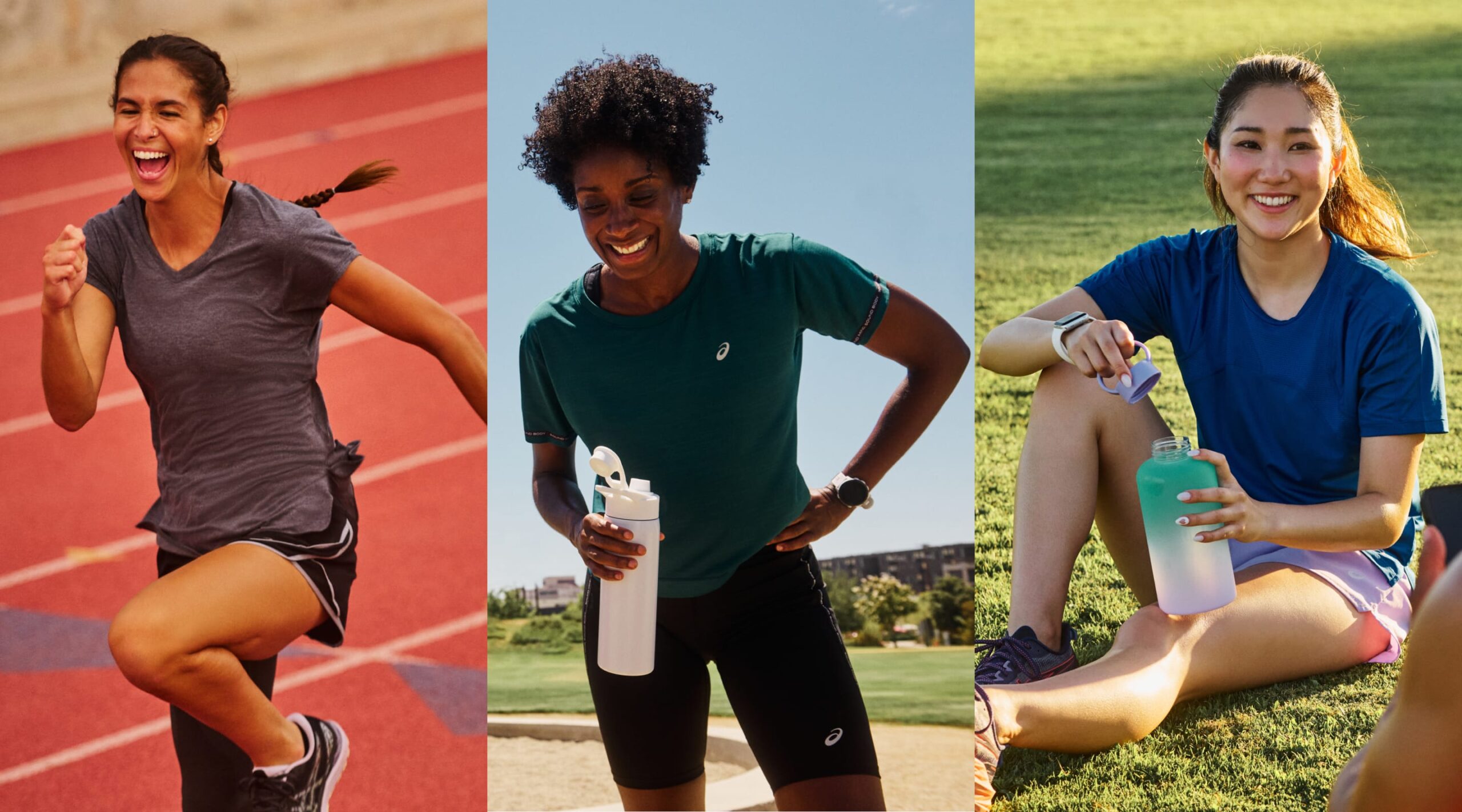
So, now that we understand the issue, barriers, and motivators behind women’s movement, how can your event respond?
We’ve summarized three themes for your event to consider, and paired them with some actions your event can take in response to the study’s insights.
Theme 1: Increase accessibility to, and at your event

Idea
What your event can do
Create opportunities for participants to invite
friends & loved ones
With friends and family being the fitness influencers and motivators to move, create opportunities for participants to invite them!
Examples:
- Offer a relay style event (co-ed, or all female!)
- Create a partner run where participants must cross the finish with their partner
- Offer promotions for those who register with a friend or group!
Incentivize participants to share your event and encourage others to register with our social referral tool
Consider a variety of distance and competition options
Offer a variety of events that consider varying abilities, activity levels, and motivators.
Examples:
- “Fun” race: incorporate costumes, themes, shorter distances, find ways to include partners, children, and pets, as well as provide timed and untimed options
- For the serious racer: timed race options, varying, and longer race distances, create a range of place awards, corrals, and pacers.
Consider safety not just at your event, but leading up to it
Look for opportunities for safe space in your community.
- Does your community have an indoor track that provides hours for free, or low-cost public access?
- Are there existing running, womens, or other community groups you can partner with to provide safe spaces to train?
- If there aren’t existing safe spaces in your community, think of opportunities to expand your event, and provide them:
- Could you, or an event partner or sponsor host a series of events that builds toward your main event?
- This could look like a weekly community run, or other type of social events that leads up to event day, providing participants a safe space to train, as well as helping to build familiarity and community between them.
Theme 2: Ensure women can see themselves in your participants
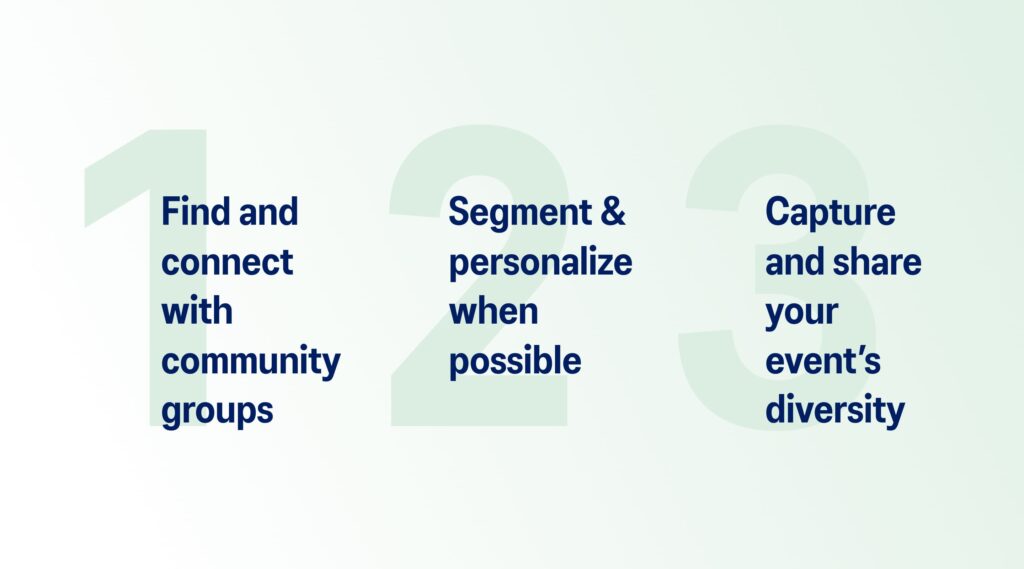
Idea
What your event can do
Find and connect with community groups
Make diversity, equity and inclusion come to life at your event by proactively inviting and welcoming diverse groups.
Explore and connect with the clubs, community groups, and activity centres that exist in your community to help expand your reach.
Segment & personalize when possible
Where possible, find common trends/qualities between participants that can help you speak more directly to them, and their unique thoughts & motivators.
- Example: Organizing your marketing list based on previous participation to speak separately to those who have previously participated in 5K events vs. marathon for example.
Personalize as much of the information contained in your message as possible – without including information participants wouldn’t think you’d know (as that can be off-putting!).
- Example: Address your message with participant’s first name, and include details like their last completed distance, finishing time, or how much they fundraised to stir competition.
Interested in learning more about how to segment your audience?
Capture and share your event’s diversity
- Make diversity a part of the conversations you have with your event photographer to make sure what they capture is representative, and not too focused on any one group.
- Create an event hashtag for your event to easily follow content posted by participants
- Set-up a shared event photo gallery and ask participants to share photos on Race Roster.
- Share event images, testimonials and stories across your marketing channels in different formats to match each audience and test what’s working with your audience
Theme 3: Re-define movement

Idea
What your event can do
Know what motivates
your participants
Understand who your participants are, to understand what their motivation for participating is.
Examples:
- Include an optional (or mandatory) question in registration that asks participants why they’re participating
- Utilize CRM or other collected data to segment your participants
- Create a promotion and hashtag to encourage participants to share their ‘why’ on social media
Incorporate mental wellbeing
into your event
Finding ways to incorporate mental wellbeing activities as a part of your event can help shape the tone, and create a greater sense of community between your participants.
Ideas:
- Incorporate a pre or post-event warm-up/cool-down meditation or breathing activity
- Include signage with mental wellbeing tips, or community board where participants can share their favourite mental wellbeing practices
- Start a social media campaign and associated hashtag, and ask participants to comment/reshare/post a #MentalWellbeingMoment
- Partner with, and invite community mental wellbeing services to have a presence at your event
Offer unique event formats
- Team vs. solo activities
- Creating event options where the objective/focus isn’t crossing the finish line as fast as possible.
- Example: Create a scavenger hunt event, or include puzzles and obstacles that require teamwork to complete.
- A ‘random acts of kindness race’ where you challenge participants to perform as many acts of kindness as they can before crossing the line
- Focus on a cause